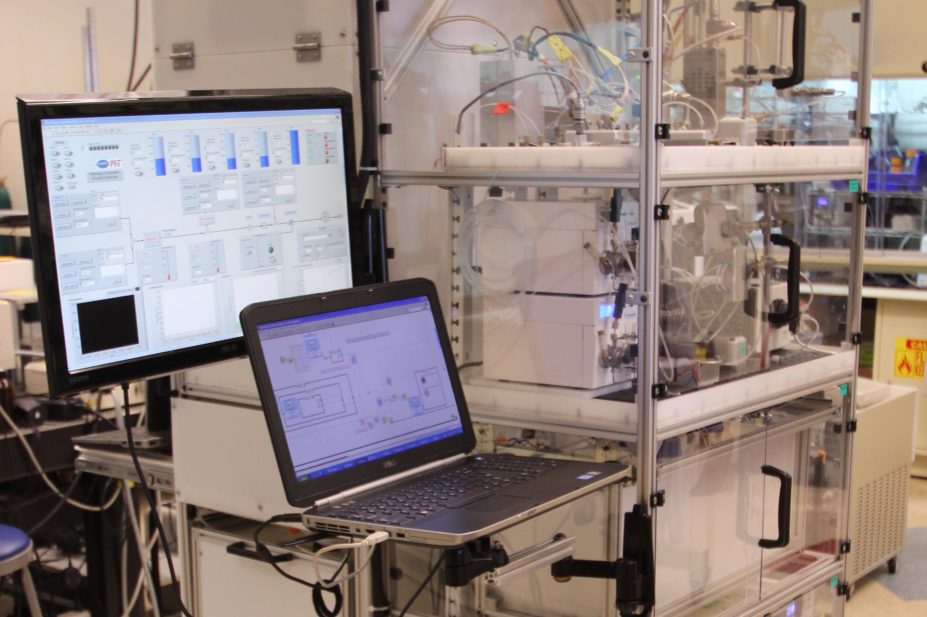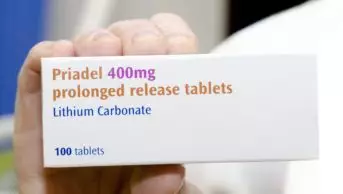
Researchers have developed a machine the size of a refrigerator that can synthesise multiple drugs from start to finish.
In a paper published in Science
[1]
on 1 April 2016, the team from the Massachusetts Institute of Technology (MIT) in Cambridge, Massachusetts, shows how the technology can be used to synthesise a number of “medic’s toolkit” drugs. The researchers say the system could be used to create active ingredients on demand, helping to prevent drug shortages and respond quicker to disease outbreaks.
“Current batch manufacturing has little flexibility to respond to surges in demand and is susceptible to severe disruption if one of the plants has to shut down,” says Klavs Jensen, whose laboratory at MIT carried out the work.
“In addition to providing an alternative for such a situation, the technology can be used to synthesize pharmaceuticals needed for only a small number of patients,” he adds.
The machine measures 1.0m wide x 0.7m long x 1.8m deep and synthesises active pharmaceutical ingredients from starting materials and reagents using an automated process of continuous flow chemistry. Described by the researchers as “plug and play”, it consists of integrated modules that can perform individual synthesis, purification and formulation, and can be reconfigured to produce different drugs. This contrasts with current drug production methods where different stages of the process are often performed at different sites, sometimes taking as long as 12 months from start to finish.
“Key to the continuous system is the development of chemical reactions that can take place as the reactants flow through relatively small tubes as opposed to the large vats in which most pharmaceutical reactions now take place,” explains Jensen. “Traditional batch processing is often limited by the difficulty of cooling these vats, but the flow system allows reactions that produce a great deal of heat to be run safely.”
The researchers report that they were able to synthesise four pharmaceuticals: diphenhydramine hydrochloride, lidocaine hydrochloride, diazepam and fluoxetine hydrochloride. These met US standards for purity and, when optimised, the machine could produce the equivalent of hundreds or thousands of doses per day.
As well as providing alternative forms of drug manufacture, it is hoped that the technology could find use in humanitarian and battlefield situations. The team at MIT receive funding from the US Department of Defense which has an ongoing project aiming to produce a number of drugs on demand using compact devices on the battlefield. In developing countries, the technology could increase accessibility to drugs by allowing them to be manufactured closer to the point of need.
A team involving some of the same researchers previously developed a much larger prototype that was able to perform continuous manufacturing of drugs in tablet form. The new and much more compact model is only able to synthesise liquid forms of drugs for topical or oral use. But the team says that developments, such as in 3D printing, should help them develop the technology to produce tablet, capsule or injectable forms.
“We are now working on the second phase of the project, which includes making the system about 40% smaller and producing drugs whose chemical syntheses are more complex,” says Jensen.
Alastair Florence, director of the EPSRC Centre for Innovative Manufacturing in Continuous Manufacturing and Crystallisation at the University of Strathclyde in Glasgow, says the paper shows the technological progress being made worldwide to revolutionise drug manufacture.
“Continuous processing offers flexible, configurable and sustainable processing with excellent consistency, reduced material and energy needs and environmental impact,” he says.
“The potential to bring more products to market cost effectively, in a greater number of dosage forms, clearly offers significant benefits to industry and patients, ensuring access to medicines and avoiding stock-outs.”
References
[1] Adamo A, Beingessner RL, Behnam M et al. On-demand continuous-flow production of pharmaceuticals in a compact, reconfigurable system. Science 2016;352:61–67. doi: 10.1126/science.aaf1337
You may also be interested in

Competition watchdog launches investigation into discontinuation of bipolar drug

Warwick Smith: ‘The pandemic has removed factors that allowed us to be resilient for Brexit’
